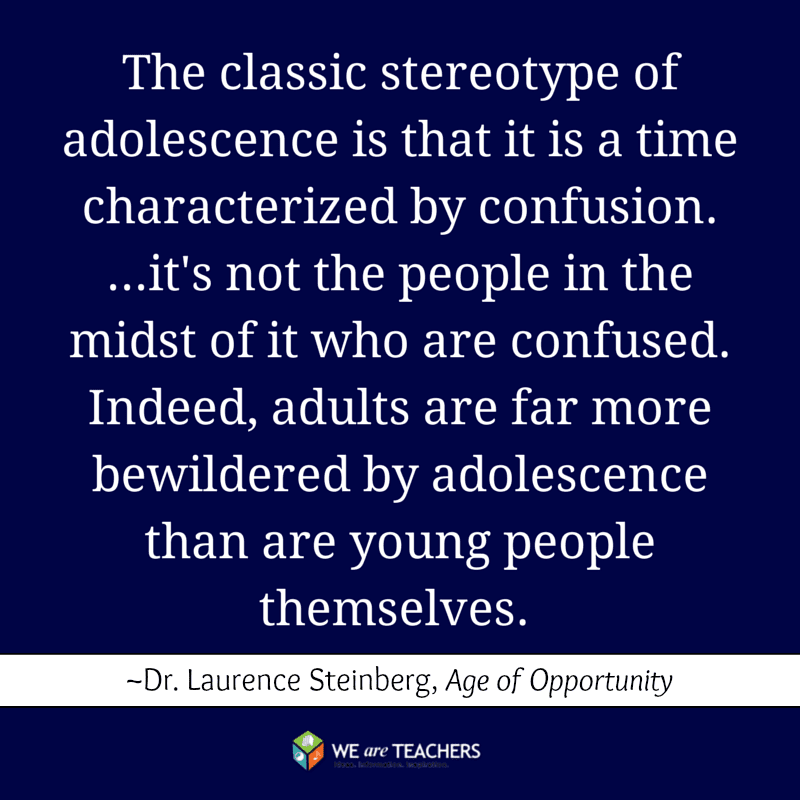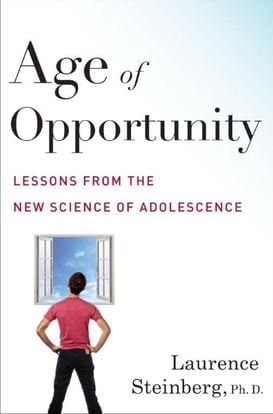My first student teaching assignment plopped me down in a class of seventh graders who, on a good day, would bark and moo because that’s funny! A bad day included a lot of tears and defiance, which made more sense to me because, hormones. When my teaching assignment was complete and I transferred to a high school English class, I breathed a sigh of relief to leave the immaturity behind.
Go ahead and laugh. I know better now.
I expected my juniors in high school to have their heads in the game, so to speak, to hit the ground running, to be more conscientious about their work. Instead, the barking and mooing were replaced with cursing and eye-rolling, and the tears and defiance increased. Why were these soon-to-be legal adults acting like children? Why were they consistently making bad choices, doing irresponsible things? I don’t know if my expectations were that much higher because of the stark contrast between grade and age levels, or if I was simply unrealistic in terms of what constituted a young adult as opposed to an adolescent.
Had I owned a copy of Dr. Laurence Steinberg’s new book, Age of Opportunity: Lessons From the New Science of Adolescence, maybe I would have been better equipped to handle and appreciate the different landscapes of my classrooms. Age of Opportunity offers research that will hopefully change the way we raise, educate and understand our young people by supporting the idea that adolescence actually takes much longer than we originally believed: “The classic stereotype of adolescence is that it is a time characterized by confusion. … it’s not the people in the midst of it who are confused. Indeed, adults are far more bewildered by adolescence than are young people themselves” (1).
Dr. Steinberg purports that adolescence stretches from ages 10 to 25 and that young people’s brains are just as malleable at these ages as they are during the first few years of life (0–3).

So, that 18-year-old who can fight for our country? He’s a baby. And the 21-year-old who just bought her first case of beer is barely an adult.
True, this mind-set change, or “attitude adjustment” as Dr. Steinberg puts it, will not happen overnight, nor will it be easy, but if we embrace these new findings as teachers and parents, we just might find a better way to engage and reach our younger population.
I had the pleasure of picking Dr. Steinberg’s brain, and while I tried to keep our conversation education-based, I couldn’t deny the impact his book has also had on my parenting perspective. Age of Opportunity is a must-read for everyone!
Stephanie Jankowski: You mention two components, participation and belongingness, are indicative of success in school. What are some tips or suggestions you have for teachers in order to increase student engagement and belongingness?
Dr. Laurence Steinberg: I think the most important thing teachers can do to get students engaged is to provide challenge, stimulation and novelty. When students disengage, it’s usually because they are bored. I also think that group or dyadic projects are great ways to promote learning because they capitalize on adolescents’ natural inclinations to want to spend time with peers and help teach collaboration, which is an important skill to have in today’s labor force. We are often too hung up on assessing individual performance, especially in a world in which being able to work well with others is crucial for success in life.
SJ: You write a lot about self-regulation, which can be quite difficult for adults, let alone teens! Do you think today’s “instant gratification” society has negatively impacted our ability to delay gratification?
LS: Adults have always complained about the ways in which kids are being corrupted by mass media. The only thing that changes is which media they complain about. In the 1950s, it was comic books. Today it’s social media. That said, I do think that all of us expect to have our questions answered quickly, whether it is during texting, Internet searching or purchasing things over electronic retailers.
SJ: So how can teachers work with students to increase self-regulation, which you mention as being a crucial skill for success?
LS: A couple of things come to mind: (1) Directly encourage children to consider both short- and long-term consequences of their choices when they are making decisions (e.g., “if you buy X now, will you have enough money left over to do Y a month from now?”); and (2) encourage activities that help build self-control, like aerobic exercise, mindfulness meditation and getting enough sleep.
SJ: In the book you mention that even you are surprised by how incredibly susceptible young adults are to the influence of their peers; apparently just being in close proximity with their pals can make “kids” act out. What can we do to combat this problem in the classroom? Assigned, ability-level group seating; teacher-assigned group projects, etc.?
LS: I think the best thing we can do is to try to limit unstructured, unsupervised peer group activities. And I agree that we can take advantage of the fact that peers activate kids’ reward centers by having more group projects, because the positive feelings kids get from being near their friends may spill over into the educational activity and make that feel more rewarding. Most of our research is on how peers influence each other to do negative things; but there’s no reason that the power of peers can’t be marshalled to motivate more pro-social behavior too.
SJ: Recently, there has been a lot of talk in the media justifying professional athletes’ actions based on their upbringing and childhood experiences. Do you think there is some truth to the idea that what we experience as “adolescents” is hard to shake off as adults, or are we simply making excuses for the behavior of some, socially, personally and professionally?
LS: While I agree that our upbringing can affect us in ways that affect our future behavior, we know that it is possible for people to change, even once they’re adults. There’s a difference between using one’s past to explain one’s behavior (which is fine) and using it to excuse one’s behavior (which isn’t).
SJ: The opinion that “tenacity is more important than talent” (116) is one that resonates with many teachers. How can teachers encourage teens to keep trying, even when they want to give up?
LS: I think we need to keep challenging students so that they experience failure every once in a while. These experiences provide opportunities for us to teach kids about how to overcome obstacles, anticipate when things might go wrong, and make plans to do better the next time. But if the initial challenge is absent, this can’t happen. I discuss this in the chapter on cultivating self-regulation.
SJ: The title of your book, Age of Opportunity, refers to the idea that adolescence is a time to help kids “thrive,” not only a time of warding off negative influences so they “survive.” This is quite the paradigm shift because, as you say, “we tend to think of adolescence as a problem waiting to happen.” Do you have any ideas or suggestions for teachers in particular regarding embracing and even jump-starting this shift in our schools?
LS: I think we need an attitude adjustment. Studies show that teachers (as well as parents) who approach adolescence as if it is going to be a difficult time actually make it turn out that way—it becomes what psychologists call a self-fulfilling prophecy. If schools organized more in-service trainings that drove the “thrive” message home, that would be a great way to start.
 To get your copy of Age of Opportunity, click HERE!
To get your copy of Age of Opportunity, click HERE!

